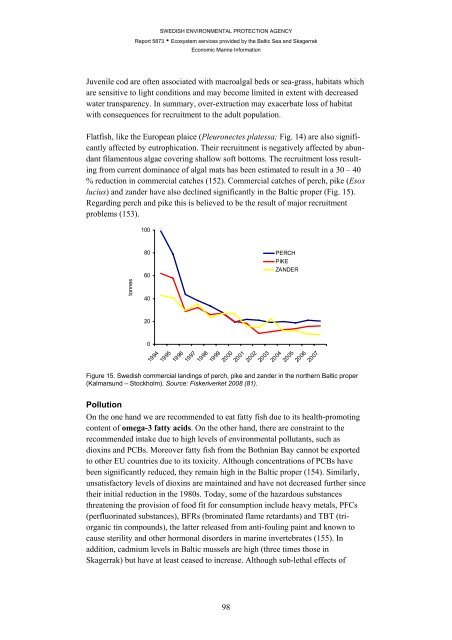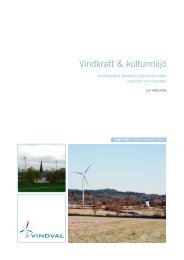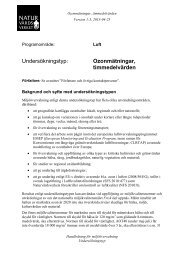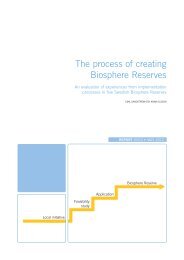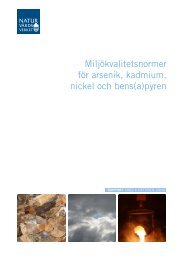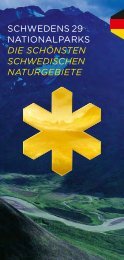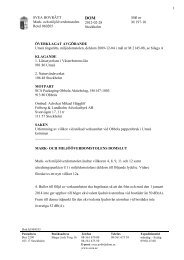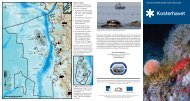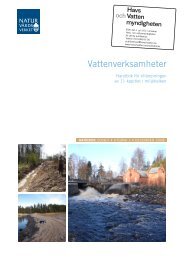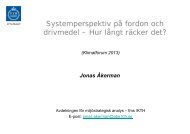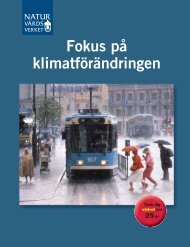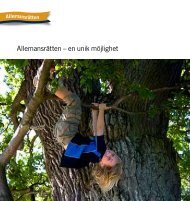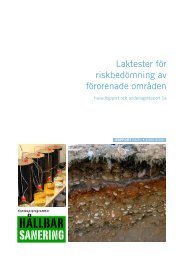Ecosystem services provided by the Baltic Sea ... - Naturvårdsverket
Ecosystem services provided by the Baltic Sea ... - Naturvårdsverket
Ecosystem services provided by the Baltic Sea ... - Naturvårdsverket
Create successful ePaper yourself
Turn your PDF publications into a flip-book with our unique Google optimized e-Paper software.
SWEDISH ENVIRONMENTAL PROTECTION AGENCY<br />
Report 5873 • <strong>Ecosystem</strong> <strong>services</strong> <strong>provided</strong> <strong>by</strong> <strong>the</strong> <strong>Baltic</strong> <strong>Sea</strong> and Skagerrak<br />
Economic Marine Information<br />
Juvenile cod are often associated with macroalgal beds or sea-grass, habitats which<br />
are sensitive to light conditions and may become limited in extent with decreased<br />
water transparency. In summary, over-extraction may exacerbate loss of habitat<br />
with consequences for recruitment to <strong>the</strong> adult population.<br />
Flatfish, like <strong>the</strong> European plaice (Pleuronectes platessa; Fig. 14) are also significantly<br />
affected <strong>by</strong> eutrophication. Their recruitment is negatively affected <strong>by</strong> abundant<br />
filamentous algae covering shallow soft bottoms. The recruitment loss resulting<br />
from current dominance of algal mats has been estimated to result in a 30 – 40<br />
% reduction in commercial catches (152). Commercial catches of perch, pike (Esox<br />
lucius) and zander have also declined significantly in <strong>the</strong> <strong>Baltic</strong> proper (Fig. 15).<br />
Regarding perch and pike this is believed to be <strong>the</strong> result of major recruitment<br />
problems (153).<br />
100<br />
tonnes<br />
80<br />
60<br />
40<br />
20<br />
0<br />
1994<br />
1995<br />
PERCH<br />
PIKE<br />
ZANDER<br />
1996<br />
1997<br />
1998<br />
1999<br />
2000<br />
2001<br />
2002<br />
2003<br />
2004<br />
2005<br />
2006<br />
2007<br />
Figure 15. Swedish commercial landings of perch, pike and zander in <strong>the</strong> nor<strong>the</strong>rn <strong>Baltic</strong> proper<br />
(Kalmarsund – Stockholm). Source: Fiskeriverket 2008 (81).<br />
Pollution<br />
On <strong>the</strong> one hand we are recommended to eat fatty fish due to its health-promoting<br />
content of omega-3 fatty acids. On <strong>the</strong> o<strong>the</strong>r hand, <strong>the</strong>re are constraint to <strong>the</strong><br />
recommended intake due to high levels of environmental pollutants, such as<br />
dioxins and PCBs. Moreover fatty fish from <strong>the</strong> Bothnian Bay cannot be exported<br />
to o<strong>the</strong>r EU countries due to its toxicity. Although concentrations of PCBs have<br />
been significantly reduced, <strong>the</strong>y remain high in <strong>the</strong> <strong>Baltic</strong> proper (154). Similarly,<br />
unsatisfactory levels of dioxins are maintained and have not decreased fur<strong>the</strong>r since<br />
<strong>the</strong>ir initial reduction in <strong>the</strong> 1980s. Today, some of <strong>the</strong> hazardous substances<br />
threatening <strong>the</strong> provision of food fit for consumption include heavy metals, PFCs<br />
(perfluorinated substances), BFRs (brominated flame retardants) and TBT (triorganic<br />
tin compounds), <strong>the</strong> latter released from anti-fouling paint and known to<br />
cause sterility and o<strong>the</strong>r hormonal disorders in marine invertebrates (155). In<br />
addition, cadmium levels in <strong>Baltic</strong> mussels are high (three times those in<br />
Skagerrak) but have at least ceased to increase. Although sub-lethal effects of<br />
98


